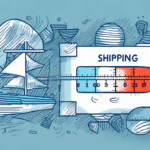How UPS Determines Shipping Rates
Understanding UPS shipping rates is essential for businesses and individuals who regularly ship packages. UPS calculates shipping fees based on several key factors to ensure accurate and fair pricing.
Weight and Dimensions
The primary determinant of UPS shipping rates is the weight of the package. Heavier packages incur higher shipping fees. Additionally, the dimensional size of the package affects the rate, especially for bulky items.
Distance and Destination
The distance between the origin and destination significantly impacts shipping costs. Shipping to remote or hard-to-reach locations typically results in higher fees due to the increased resources required. Furthermore, international shipments may attract additional customs fees and import taxes.
Service Level
UPS offers a variety of service levels, such as ground, air, and overnight shipping. The level of service selected determines the speed and cost of delivery. Faster delivery options, like next-day air, are more expensive compared to standard ground shipping.
Package Type and Contents
Certain types of packages, such as those containing hazardous materials or perishable goods, may require special handling, leading to increased shipping rates. Ensuring proper classification and packaging can help in managing costs.
Key Factors Influencing UPS Shipping Rates
Beyond weight, dimensions, distance, and service level, several other factors can influence UPS shipping rates. Awareness of these factors enables better planning and budgeting for shipping needs.
Time of Year
During peak seasons, such as holidays, shipping rates may increase due to higher demand and limited capacity. Planning shipments outside peak periods can help in reducing costs.
Business Discounts and Volume Shipping
UPS offers discounts to businesses and regular shippers. Customers who ship in high volumes can benefit from discounted rates, helping to lower overall shipping expenses.
Fuel Surcharges and Additional Fees
Fuel price fluctuations can affect shipping rates through fuel surcharges. Additionally, other fees like residential delivery or Saturday delivery may apply depending on the specific shipping requirements.
Calculating and Optimizing UPS Shipping Costs
Accurately calculating UPS shipping costs is crucial for budgeting and ensuring competitive pricing. UPS provides tools and resources to aid in cost estimation and optimization.
Using the UPS Shipping Calculator
UPS offers an online shipping calculator that allows users to input package details to obtain an estimated shipping cost. This tool considers weight, dimensions, distance, and selected service level to provide a comprehensive estimate.
Optimizing Package Size and Weight
By optimizing the size and weight of packages, shippers can reduce costs. Using appropriately sized packaging materials and minimizing excess weight are effective strategies for cost savings.
Leveraging UPS Discounts
Businesses and frequent shippers can take advantage of UPS's discount programs. Enrolling in UPS My Business can unlock savings and provide access to exclusive rates.
UPS Shipping Services: Options and Choosing the Right One
UPS provides a wide range of shipping services tailored to different needs. Selecting the appropriate service ensures balanced cost and delivery efficiency.
Ground Shipping
UPS Ground is a cost-effective option for non-urgent shipments within the United States. Delivery typically takes 1-5 business days, depending on the destination.
Air Shipping
Options like UPS Next Day Air and UPS 2nd Day Air cater to time-sensitive shipments. These services guarantee faster delivery times at a premium cost.
International Shipping
For global shipments, UPS offers services like UPS Worldwide Express and UPS Worldwide Saver. These services provide reliable international shipping with varying delivery speeds and costs.
Specialty Services
UPS also provides specialized services such as same-day delivery, freight shipping for large items, and services for hazardous materials. These options cater to unique shipping requirements.
Comparing UPS Rates with Other Carriers
To ensure the best shipping rates and services, it's important to compare UPS with other carriers like FedEx and USPS. Each carrier has its own pricing structure, service offerings, and strengths.
Rate Comparison
Comparing the rates of UPS, FedEx, and USPS can help identify the most cost-effective option for specific shipping needs. Factors such as package size, weight, and delivery speed play significant roles in rate differences.
Service Reliability and Speed
Beyond cost, assessing the reliability and speed of each carrier’s services is vital. UPS is known for its extensive network and consistent delivery times, but other carriers may offer competitive advantages in specific areas.
Customer Service and Support
Customer service quality can impact the shipping experience. Evaluating carriers based on their support services, tracking capabilities, and responsiveness can influence the decision-making process.
Tips to Save Money on UPS Shipping Rates
Implementing strategies to minimize UPS shipping costs can lead to significant savings. Here are some effective tips to reduce shipping expenses:
- Use UPS Online Tools: Utilize UPS's online shipping tools to print labels and schedule pickups for discounts.
- Choose Economical Service Levels: Opt for ground shipping or standard delivery services when speed is not a priority.
- Bundle Shipments: Consolidate multiple shipments into a single package or shipment to take advantage of reduced rates.
- Enroll in UPS My Choice: Take advantage of the UPS My Choice program for exclusive discounts and flexible delivery options.
Best Practices for Packing, Labeling, and Tracking with UPS
Proper packing and labeling are essential for ensuring packages are delivered safely and on time. Additionally, effective tracking helps monitor the shipment progress and address any issues promptly.
Packing Tips
- Use sturdy, appropriately sized boxes to protect the contents.
- Apply sufficient cushioning materials like bubble wrap or packing peanuts to prevent damage during transit.
- Securely seal packages with strong packing tape to avoid accidental openings.
Labeling Best Practices
- Clearly and accurately label each package with the recipient's address and sender’s information.
- Include any necessary customs documentation for international shipments.
- Use legible and durable labels to ensure they remain intact throughout the shipping process.
Tracking Your Shipments
Use UPS's online tracking tool to monitor the status of your packages in real-time. Set up notifications via email or text to receive updates on delivery status, enhancing visibility and peace of mind.
Common Mistakes to Avoid When Using UPS Shipping Services
Avoiding common errors can lead to a smoother and more efficient shipping experience with UPS:
- Packing Errors: Ensure packages are properly packed to prevent damage. Avoid overpacking or underpacking items.
- Incorrect Addressing: Double-check recipient addresses to prevent delivery delays or returns.
- Neglecting Restrictions: Be aware of UPS shipping restrictions and regulations for certain items to avoid fines or shipment holds.
- Ignoring Tracking: Regularly track shipments to stay informed about their progress and address any issues promptly.
By being mindful of these common pitfalls, you can enhance your UPS shipping experience, ensuring timely and secure delivery of your packages.
Understanding UPS shipping rates and optimizing your shipping strategy can lead to significant cost savings and improved operational efficiency. By considering the various factors that influence shipping costs, utilizing UPS's tools and services, and adopting best practices for packing and tracking, you can make informed shipping decisions that benefit your business or personal needs.




















